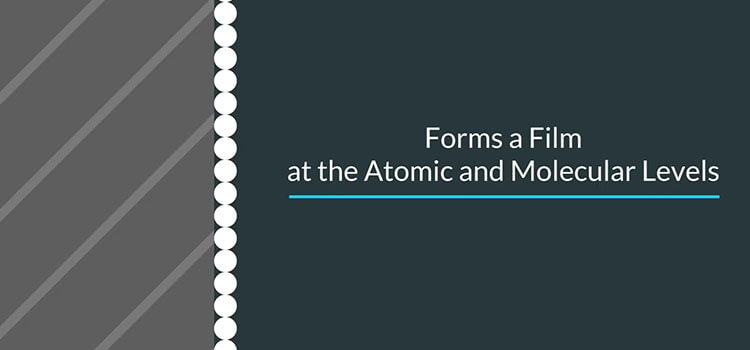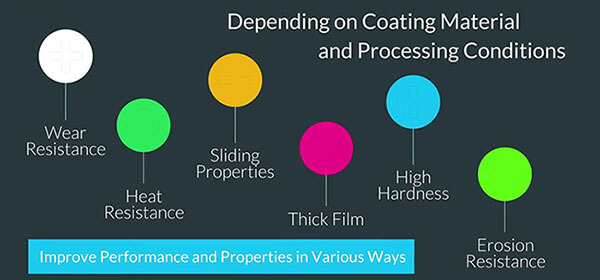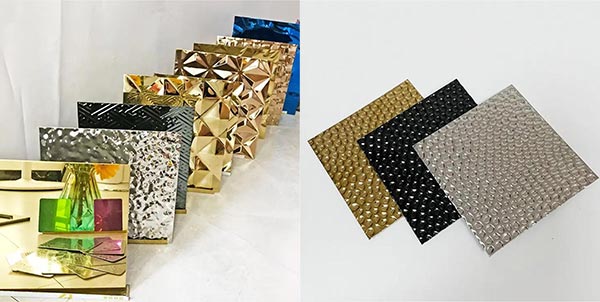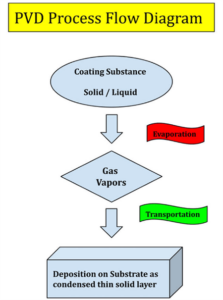Materials of many products may have intrinsic features and colors. Also, some may have an attractive appearance but is expensive to use, such as gold used in jewelry. Thus, base materials combined with coatings are used to improve the ornamental effect of the products and their characteristics like hardness, durability, etc.
PVD coating is one of these coatings used to improve products such as jewelry, watches, etc. You can check another 2 blogs to learn a detailed introduction about PVD jewelry and PVD watches.
In this blog, I’ll tell you the basic information about PVD coating you should know. Let us get an overview of the PVD coating now.
1. What is PVD?

Pic source: KOBELCOofficial
Environment conditions like moisture, heat, air, chemicals, and other factors can affect the lifespan and endurance of everything. For example, water can cause the metals to rust, while heat can cause the plastics to break, and so on.
In order to prevent that, products are coated with organic and inorganic substances. These coatings act as a barrier between the environment and product surface, and by doing so, they significantly increase the lifespan of products.
Besides, the coatings can also change properties like heat resistance, friction, color, texture, hardness, and many more.
Then, what does PVD stand for?
In fact, PVD is a kind of technique to form coatings. There are many coating methods, including electroplating, electroless plating, PVD plating, and CVD plating. Among these methods, the PVD technique is a very famous and commonly used one.
PVD, also called Physical Vapour Deposition, is a dry coating process in which a thin layer of an element is deposited on the required substrate ( product ). The process takes place in a vacuum chamber.
2. Pros and Cons of PVD Coating
There are different types of coating used on products. If you have no idea which one is better, you should understand the characteristics of these coatings separately. Whether it is Electroplating or Electroless plating or PVD or CVD, each has its own advantages and demerits.
In the following, I’ll discuss the pros and cons of PVD. If you want to know the comparison between PVD and other types of coating, you can check my previous blog about CVD vs PVD.
Advantages of PVD Coating
- Excellent abrasion resistance
- Excellent high heat-resistant properties
- Can be used to change the sliding properties of products
- High impact resistance, even topcoats, are not required mostly
- PVD Machines come in various sizes for different size products
- Can be operated at low temperature for low melting point substrate materials.
- Any nature of the substrate ( product ) can be used, such as metal, plastics, e.t.c.
- Almost all inorganic and some organic compounds can be used as coating agents
- More environmentally friendly than other coating processes such as electroplating and painting.
- Sometimes, PVD coatings are harder and more rust-resistant than the electroplating.
- Can be used to change the color of materials such as stainless steel can be coated to look like brass, copper, e.t.c

Pic source: KOBELCOofficial
Disadvantages of PVD Coating
PVD coating is famous and popular, but the techniques it needed still have some limitations;
- It is a slow process.
- It is a costly process. Check this blog about the cost of PVD to learn how much it is.
- PVD coating is a complex mechanism, and skilled workers are needed.
- PVD process generates a lot of heat, so a cooling water system is required.
- The coatings are sprayed on other chamber parts besides the product, and cleaning is required.
- Most PVD techniques only allow line of sight coatings, so only useful for simple shape products. But some PVD methods also allow the coating of complex structures.
3. Basic Principles of PVD Techniques
PVD is called vapor deposition because, firstly, the PVD coating material is converted from condensed state to vapor state then deposited on the product ( substrate ) surface in condensed phase as a thin film.
This is the basic principle of all different PVD plating.
There are different types of PVD methods. But all of them have the same working principle and steps. The 4 basic steps of PVD coating are given below;
- Evaporation
- Transportation
- Reactive between Metal atoms and Appropriate Gas
- Deposition
If you want to know more details about these steps, you can check my blogs about the processes of PVD methods.
4. Applications of PVD Coating
PVD coatings methods can be used in almost any sector of life. According to a report, the market value of PVD coating is more than $3.5 billion and will increase more in the coming years.
PVD coatings are used on products where a thin layer is needed for proper mechanical, optical, chemical, or electronic functions.
The sectors where the PVD coating process is widely used are given below;
- Optics
- Jewelry
- Medical
- Watches
- Firearms
- Aerospace
- Automotive
- Cutting tools
- Metals (aluminum, copper, bronze, etc.)
- Thin-films (window tint, food packaging, etc.)
- Architectural ironmongery, solar panels, and sheet
- Dyes and molds for all manner of material processing
PVD coatings are used in all these sectors to make the products more heat-resistant, abrasion resistant, corrosion resistance, and more stable in every way.

Moreover, there are many options of PVD coating colors. They can provide any quality texture finish with any desired colors. For example, the Vessel Structure in Newyork, Gold finishes on iPhones, etc.
Most PVD coating processes provide atomic-level finishes, which is very necessary for the proper functioning of many products such as semiconductors, etc.
Thus, overall Physical Vapor Deposition ( PVD ) processes are more efficient and budget-friendly than conventional coating processes.
Conclusion
If this blog can make you clearer about PVD coating, share it on the media platforms or with your friends. If you still have questions, please leave a message below.
We’re Jingsourcing, a leading sourcing company in China. If you want to wholesale or customize fashion jewelry at very competitive prices, please feel free to CONTACT US.


Leave A Comment